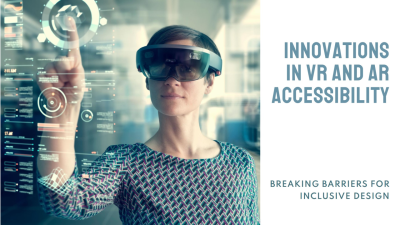Augmented reality has transformed from a novelty tech demo into a powerful tool across industries. What’s driving this evolution? The integration of sophisticated artificial intelligence capabilities. Today, we’re exploring how AI is elevating AR experiences through synthetic data generation, explainable AI systems, and emotion recognition.
The Synthetic Data Revolution in AR Development
Creating augmented reality experiences traditionally required massive datasets of real-world imagery and interactions. This approach came with significant challenges – privacy concerns, limited diversity, and enormous collection costs.
Enter synthetic data generation. This breakthrough approach uses AI to create artificial yet realistic training data for AR systems.
Developers now craft infinite variations of scenarios without filming a single real-world video. Think about AR navigation systems learning from synthetically generated street views with varying weather conditions, lighting, and pedestrian behaviors.
The benefits extend beyond convenience. Synthetic data helps eliminate bias in AR systems by ensuring proper representation across demographics and scenarios. When AR glasses need to recognize hand gestures across different skin tones and lighting conditions, synthetic data provides the diversity needed for reliable performance.
Companies deploying AR technology find synthetic data particularly valuable for sensitive applications. Healthcare AR tools can train on realistic yet completely anonymous patient scenarios, maintaining privacy while still delivering accurate augmentations.
Making AR Decisions Transparent with Explainable AI
As AR systems make increasingly complex decisions about what information to display and when, users rightfully question how these choices happen. Explainable AI addresses this concern directly.
Traditional “black box” AI models hide their decision-making processes behind impenetrable layers of calculations. Explainable AI, by contrast, provides clear reasoning behind every action taken by an AR system.
When your AR glasses highlight a potential hazard while driving, explainable AI allows the system to communicate why that particular object warranted attention. Was it moving unpredictably? Did it match patterns of previous accidents? This transparency builds essential trust between users and their AR assistants.
For businesses integrating AR into customer experiences, explainable AI offers protection against liability concerns. When decisions can be traced and explained, companies can demonstrate responsible implementation of these powerful technologies. Visit our homepage for more insights on building trust in your AR applications.
Companies implementing explainable AI in their AR systems report higher user satisfaction and longer engagement times. People naturally trust systems they understand, and explainable AI creates that crucial understanding.
Emotion Recognition: Adding Empathy to AR Interactions
Perhaps the most fascinating development in AR-AI integration is emotion recognition capability. These systems analyze facial expressions, voice tone, and even physiological signals to determine a user’s emotional state.
AR experiences now adapt in real-time based on detected emotions. Educational AR applications adjust difficulty when frustration appears, while AR shopping experiences might offer alternatives when disappointment registers.
The technology works by analyzing micro-expressions – subtle facial movements lasting just fractions of a second – that humans often miss but reveal genuine emotional responses. Combined with voice pattern analysis, these systems achieve surprising accuracy in determining how users truly feel.
Retail brands have become early adopters, using emotion-responsive AR fitting rooms that detect enthusiasm or hesitation about particular items. The system then adjusts recommendations accordingly, creating a personalized shopping journey that feels remarkably intuitive.
The Ethical Dimension
With great capability comes significant responsibility. The AI-AR integration raises important ethical considerations around privacy, consent, and psychological impact.
Responsible implementation requires transparent data practices, clear opt-in mechanisms, and careful consideration of how emotional data is stored and used. The industry continues developing standards to ensure these powerful technologies enhance rather than exploit human experiences.
The most successful implementations maintain a careful balance between capability and responsibility, using these technologies to genuinely improve user experiences rather than simply collecting more data.
Looking Forward
The integration of AI with AR represents more than technical advancement – it signals a fundamental shift toward more intuitive, responsive, and human-centered digital experiences. As these technologies mature, we can expect even more seamless blending of digital assistance with our physical reality.
Tomorrow’s AR experiences will understand not just what we see, but how we feel about what we see. They’ll explain their suggestions in ways we understand, and they’ll learn from scenarios that never physically occurred. The future of AR isn’t just visual – it’s intelligent, empathetic, and transparent.





